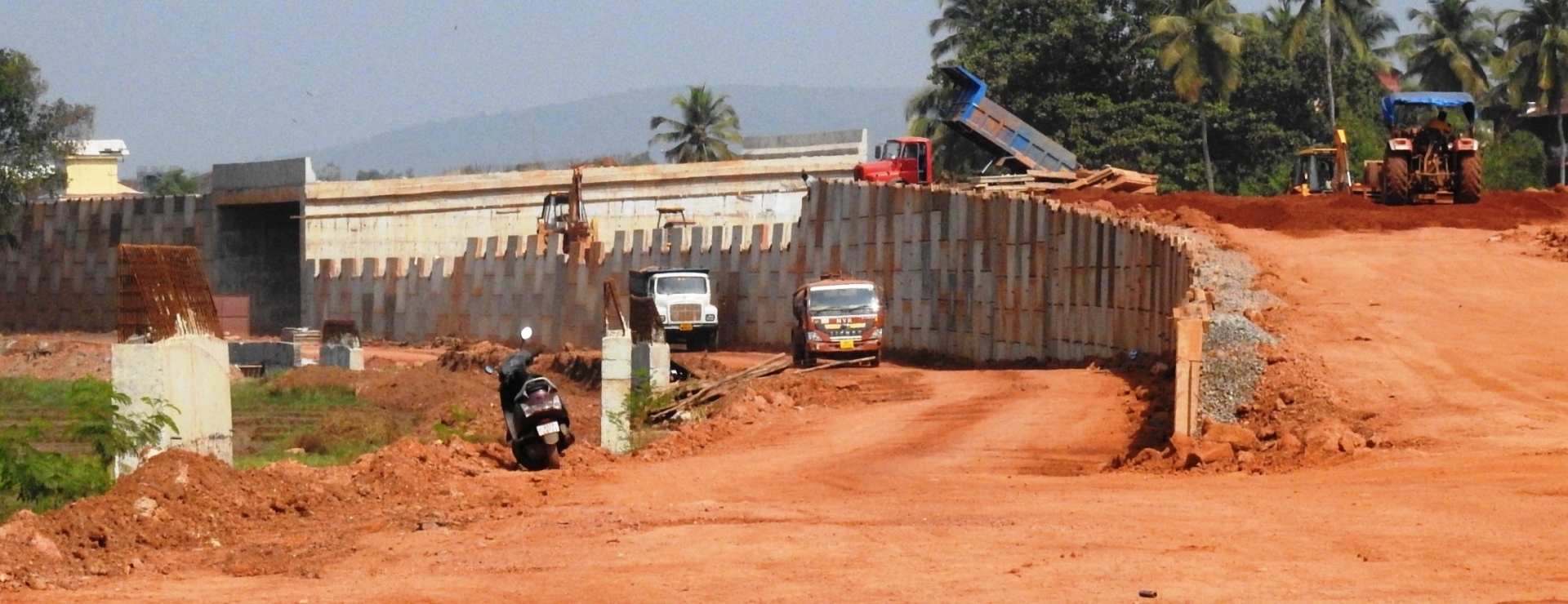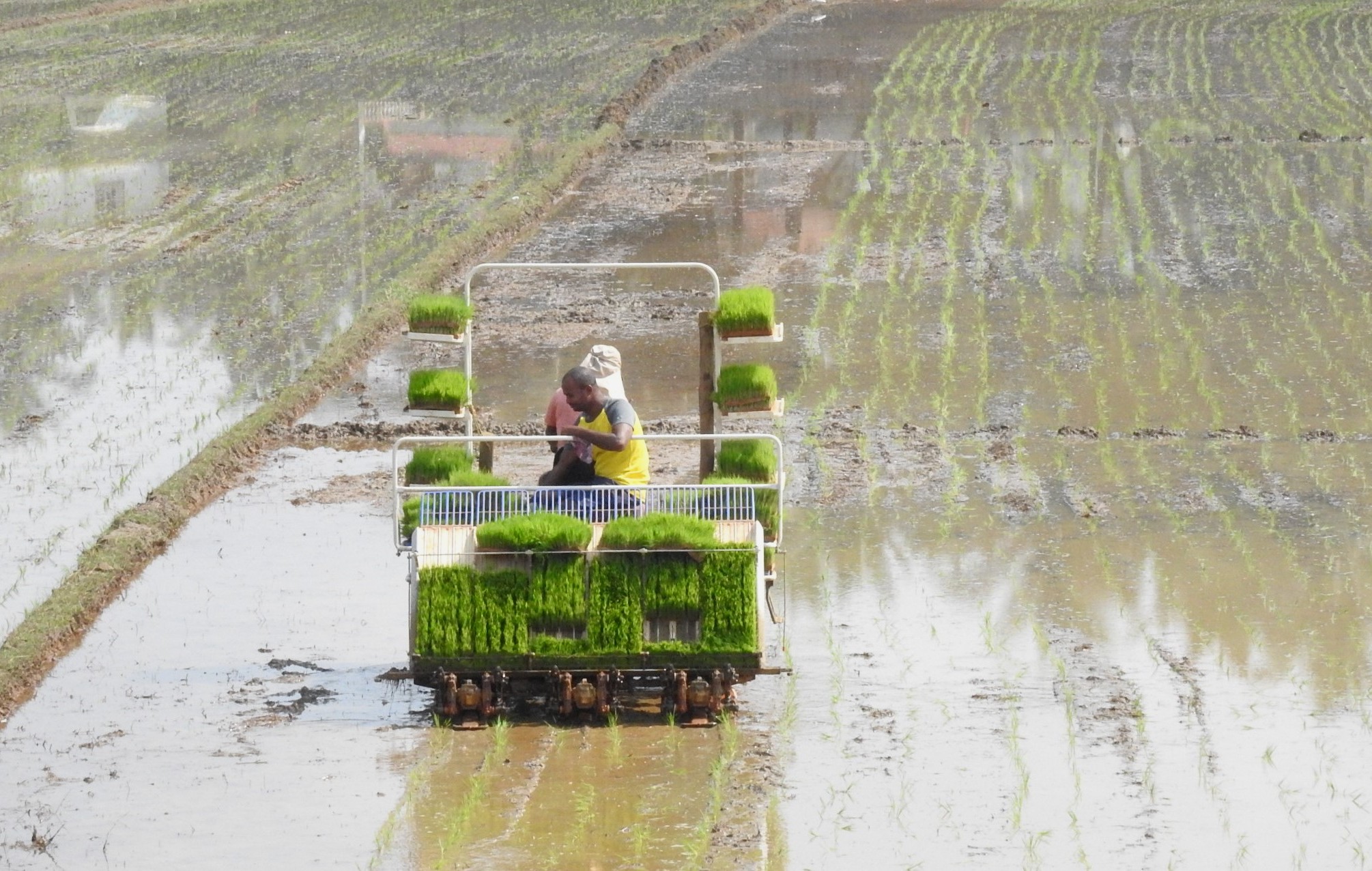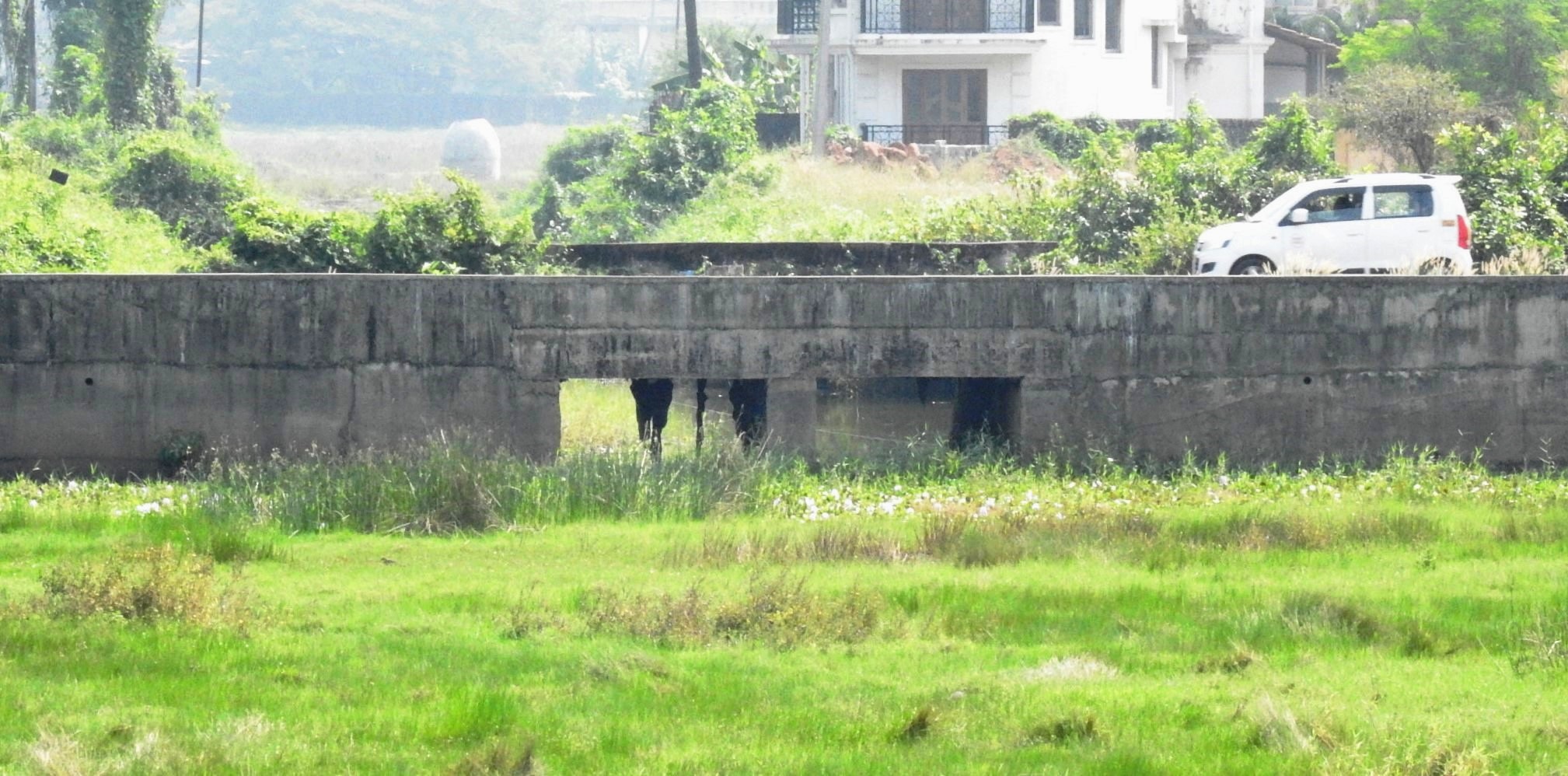Centre’s envoy had recommended crucial plan to mitigate flooding in Benaulim; PWD, Highway officials aim to complete bypass work before onset of monsoons


MARGAO
An earthen embankment is finally taking shape right through Benaulim’s picturesque Tolleaband water body to make way for the western road bypass.
A visit to Tolleaband on Sunday revealed that a mechanical transplanter has been roped in by the beleaguered farmers to sow paddy for the current season in the fertile fields. On the other hand, a fleet of trucks, besides heavy machinery was found working overtime to raise an earthen embankment in the watery body, suggesting that repeated pleas of Benaulim farmers and villagers for construction of the western bypass on stilts through the Tolleaband body has fallen on the deaf ears of the State government and cold shouldered by the Ministry of Surface Transport, New Delhi.
Work on the balance bypass project passing through Benaulim has gained momentum post-visit of the expert, R K Pandey deputed by Union Surface Transport Minister Nitin Gadkari to study the demand for building the western bypass on stilt passing through the Tolleaband water body.
In fact, officials of the PWD, NH in private say they are aiming to complete the bypass work before the onset of monsoons, even though the contractor has sought time till September 2024 to complete the work.
Take note, the Centre’s envoy R K Pandey did not recommend the bypass on stilts passing through the Tolleaband water body, but had come out with crucial recommendations, including a comprehensive drainage plan at and around the Tolleaband water body.
Sadly, while the PWD, NH trucks and machinery is working round the clock to raise an earthen embankment through the Tolleaband water body, there seems no corresponding work underway around the water body as recommended by R K Pandey, indicating that while the government has accelerated the pace of the bypass work, the fate of the comprehensive drainage plan suggested by the expert remains unknown.
Senior PWD, NH officials say that Pandey’s report and recommendations have been forwarded to the PWD, Roads for widening of the culverts on the Benaulim-Varca road and the Water Resources Department for de-silting of the river Sal and its protection with bunds.
Blackish water finding its way into River Sal, but desilting work yet to begin

Any stranger heading to the coastal belt via the Khareband bridge would not believe that the water channel passing underneath is a river, once considered Salcete’s life line, but a storm water nullah. Reason: The stretch of the river, especially from Mungul to the Khareband bridge literally runs parallel to the low-lying fields for want of protection and development. Local farmers even claim that the project had received a nod from the authorities by citing River Sal as a nullah and not a river.
In fact, when the Centre’s envoy R K Pandey had inspected the area around Tolleaband water body to ascertain the causes of flooding and inundating of the area during monsoons, he identified the river as one of the cause of flooding. When Pandey stood on the Khareband bridge, he was moved by the pathetic state of the River Sal, even questioning the media persons why have the people allowed the river to degenerate into the present state.
In fact, Pandey was quick to point out that unless the river is de-silted and strengthened with protective bunds, the flooding issue plaguing Tolleaband would remain unaddressed even if the government decides to build the western bypass on stilts.
A visit to the Khareband bridge on Sunday revealed that blackish water was flowing into the river. While men and machinery was working round the clock at the adjoining Tolleaband water body to raise an earthen embankment to pave way for the bypass, no corresponding work was seen around the Khareband bridge, either to de-silt the river Sal or to implement R K Pandey’s implantation of the comprehensive drainage plan at the area.
No plans to increase culverts along Benaulim-Varca road

Another crucial recommendation that was made by the Centre’s envoy R K Pandey was to make provision for additional culverts or increasing the size of the existing culverts.
This recommendation was made by Pandey after he found during inspection that flood water stagnated in the Tolleaband water body for want of drainage for the quick flow of rain water into the adjoining river Sal. In fact, Pandey was taken aback when he found that the PWD has made a provision for 10 culverts along the 650-metre bypass stretch passing through Tolleaband body. The total area covered by these 10 culverts was approximately 157 square metres.
As against this, he came across just two culverts, connecting the Tolleaband water body to the adjoining river Sal, on the 750-metre Benaulim-Varca road. As per Pandey’s estimate, the size of the two culverts was just 36 square metres, insufficient to ensure smooth movement of flood water from the water body into the river.
A ride down the Benaulim-Varca road passing through the Mercado mall revealed that not only the size of the two culverts remaining the same, but there’s no work underway to increase the number of culverts on the road as per Pandey’s comprehensive drainage plan.